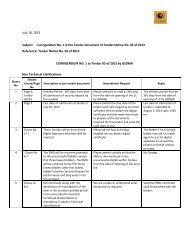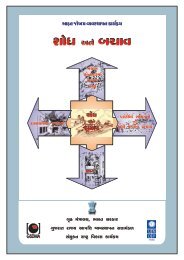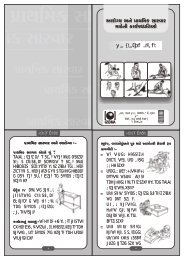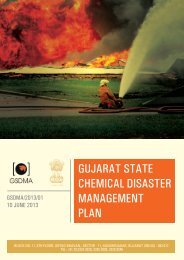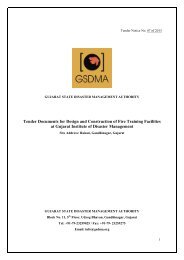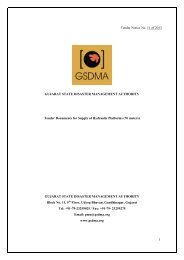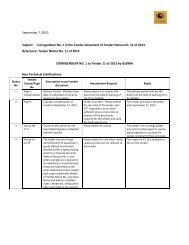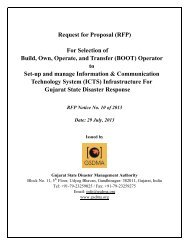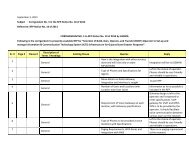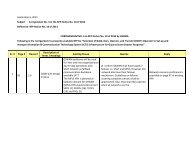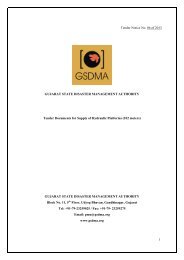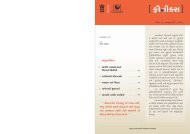GUIDE148Organic Peroxides (Heat and ContaminationSensitive/Temperature Controll ed)ERG2012ERG2012Organic Peroxides (Heat and ContaminationSensitive/Temperature Controll ed)GUIDE148POTENTIAL HAZARDSFIRE OR EXPLOSION• May explode from heat, contamination or loss of temperature control.• These materials are particularly sensitive to temperature rises. Above a given “Control Temperature”they decompose violently and catch fire.• May ignite combustibles (wood, paper, oil, clothing, etc.).• May ignite spontaneously if exposed to air.• May be ignited by heat, sparks or flames.• May burn rapidly with flare-burning effect.• Containers may explode when heated.• Runoff may create fire or explosion hazard.HEALTH• Fire may produce irritating, corrosive and/or toxic gases.• Ingestion or contact (skin, eyes) with substance may cause severe injury or burns.• Runoff from fire control or dilution water may cause pollution.PUBLIC SAFETY• CALL EMERGENCY RESPONSE Telephone Number on Shipping Paper first. If Shipping Paper notavailable or no answer, refer to appropriate telephone number listed on the inside back cover.• As an immediate precautionary measure, isolate spill or leak area in all directions for at least 50meters (150 feet) for liquids and at least 25 meters (75 feet) for solids.• Keep unauthorized personnel away.• Stay upwind.• Keep out of low areas.• DO NOT allow the substance to warm up. Obtain liquid nitrogen (wear thermal protective clothing,see GUIDE 120), dry ice or ice for cooling. If this is not possible or none can be obtained, evacuatethe area immediately.PROTECTIVE CLOTHING• Wear positive pressure self-contained breathing apparatus (SCBA).• Wear chemical protective clothing that is specifically recommended by the manufacturer. It mayprovide little or no thermal protection.• Structural firefighters’ protective clothing will only provide limited protection.EVACUATIONLarge Spill• Consider initial evacuation for at least 250 meters (800 feet) in all directions.Fire• If tank, rail car or tank truck is involved in a fire, ISOLATE for 800 meters (1/2 mile) in all directions;also, consider initial evacuation for 800 meters (1/2 mile) in all directions.EMERGENCY RESPONSEFIRE• The temperature of the substance must be maintained at or below the “Control Temperature” at alltimes.Small Fire• Water spray or fog is preferred; if water not available use dry chemical, CO 2 or regular foam.Large Fire• Flood fire area with water from a distance.• Use water spray or fog; do not use straight streams.• Do not move cargo or vehicle if cargo has been exposed to heat.• Move containers from fire area if you can do it without risk.Fire involving Tanks or Car/Trailer Loads• Fight fire from maximum distance or use unmanned hose holders or monitor nozzles.• Cool containers with flooding quantities of water until well after fire is out.• BEWARE OF POSSIBLE CONTAINER EXPLOSION.• ALWAYS stay away from tanks engulfed in fire.• For massive fire, use unmanned hose holders or monitor nozzles; if this is impossible, withdraw fromarea and let fire burn.SPILL OR LEAK• ELIMINATE all ignition sources (no smoking, flares, sparks or flames in immediate area).• Keep combustibles (wood, paper, oil, etc.) away from spilled material.• Do not touch or walk through spilled material.• Stop leak if you can do it without risk.Small Spill• Take up with inert, damp, non-combustible material using clean non-sparking tools and place intoloosely covered plastic containers for later disposal.Large Spill• Dike far ahead of liquid spill for later disposal.• Prevent entry into waterways, sewers, basements or confined areas.• DO NOT CLEAN-UP OR DISPOSE OF, EXCEPT UNDER SUPERVISION OF A SPECIALIST.FIRST AID• Move victim to fresh air.• Call 108 or emergency medical service.• Give artificial respiration if victim is not breathing.• Administer oxygen if breathing is difficult.• Remove and isolate contaminated clothing and shoes.• Contaminated clothing may be a fire risk when dry.• Remove material from skin immediately.• In case of contact with substance, immediately flush skin or eyes with running water for at least 20minutes.• Keep victim warm and quiet.• Ensure that medical personnel are aware of the material(s) involved and take precautions to protectthemselves.Page 236Page 237
GUIDE149Substances (Self-Reactive)ERG2012ERG2012Substances (Self-Reactive)GUIDE149POTENTIAL HAZARDSFIRE OR EXPLOSION• Self-decomposition or self-ignition may be triggered by heat, chemical reaction, friction or impact.• May be ignited by heat, sparks or flames.• Some may decompose explosively when heated or involved in a fire.• May burn violently. Decomposition may be self-accelerating and produce large amounts of gases.• Vapours or dust may form explosive mixtures with air.HEALTH• Inhalation or contact with Vapours, substance or decomposition products may cause severe injury ordeath.• May produce irritating, toxic and/or corrosive gases.• Runoff from fire control may cause pollution.PUBLIC SAFETY• CALL EMERGENCY RESPONSE Telephone Number on Shipping Paper first. If Shipping Paper notavailable or no answer, refer to appropriate telephone number listed on the inside back cover.• As an immediate precautionary measure, isolate spill or leak area in all directions for at least 50meters (150 feet) for liquids and at least 25 meters (75 feet) for solids.• Keep unauthorized personnel away.• Stay upwind.• Keep out of low areas.PROTECTIVE CLOTHING• Wear positive pressure self-contained breathing apparatus (SCBA).• Wear chemical protective clothing that is specifically recommended by the manufacturer. It mayprovide little or no thermal protection.• Structural firefighters’ protective clothing will only provide limited protection.EVACUATIONLarge Spill• Consider initial downwind evacuation for at least 250 meters (800 feet) in all directions.Fire• If tank, rail car or tank truck is involved in a fire, ISOLATE for 800 meters (1/2 mile) in all directions;also, consider initial evacuation for 800 meters (1/2 mile) in all directions.EMERGENCY RESPONSEFIRESmall Fire• Dry chemical, CO 2, water spray or regular foam.Large Fire• Flood fire area with water from a distance.• Move containers from fire area if you can do it without risk.Fire involving Tanks or Car/Trailer Loads• BEWARE OF POSSIBLE CONTAINER EXPLOSION.• Fight fire from maximum distance or use unmanned hose holders or monitor nozzles.• Cool containers with flooding quantities of water until well after fire is out.• Withdraw immediately in case of rising sound from venting safety devices or discoloration of tank.• ALWAYS stay away from tanks engulfed in fire.SPILL OR LEAK• ELIMINATE all ignition sources (no smoking, flares, sparks or flames in immediate area).• Do not touch or walk through spilled material.• Stop leak if you can do it without risk.Small Spill• Take up with inert, damp, non-combustible material using clean non-sparking tools and place intoloosely covered plastic containers for later disposal.• Prevent entry into waterways, sewers, basements or confined areas.FIRST AID• Move victim to fresh air.• Call 108 or emergency medical service.• Give artificial respiration if victim is not breathing.• Administer oxygen if breathing is difficult.• Remove and isolate contaminated clothing and shoes.• In case of contact with substance, immediately flush skin or eyes with running water for at least 20minutes.• Keep victim warm and quiet.• Ensure that medical personnel are aware of the material(s) involved and take precautions to protectthemselves.Page 238Page 239



